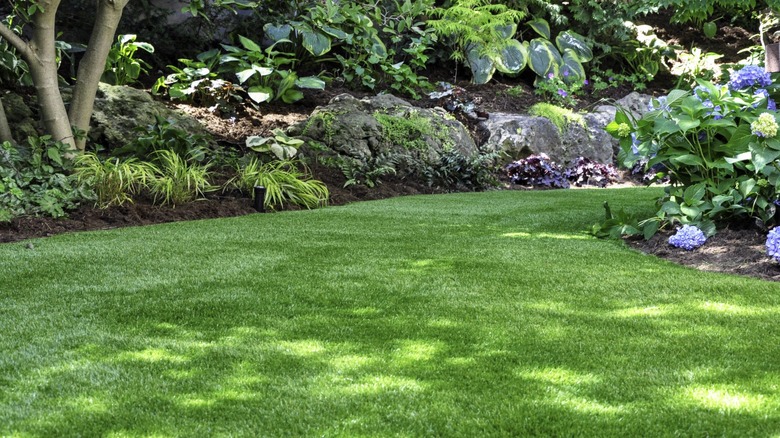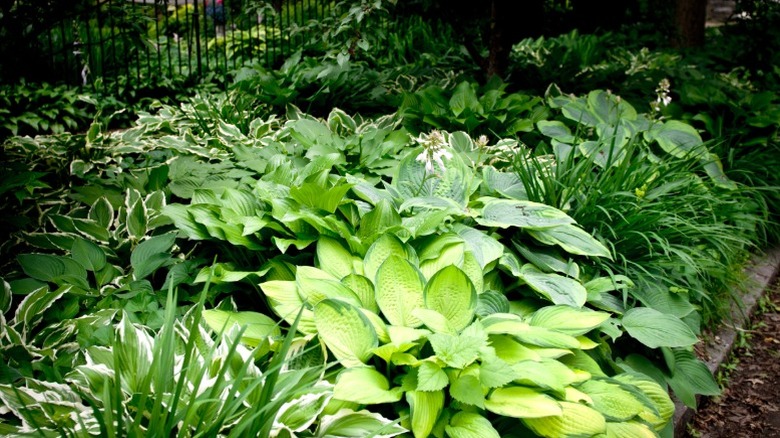The Lush, Low-Maintenance Ground Cover That Thrives In The Shade
Growing anything in deep or partial shade, whether near a tree or another structure, can be a difficult task for a gardener to undertake. Many plants do not tolerate the shade well, and it can be especially frustrating to find the right ground cover plant for spaces below trees and in the shade of tall buildings. But that's where the humble but brilliant hosta (Hosta spp.) steps in. Hostas, which come in many lush varieties, are herbaceous perennials with beautiful, arching leaves that can elegantly cover the ground. Hostas are typically hardy from USDA zones 3 to 9, making them a great ground cover option for many areas in the U.S. These low-lying, mounding plants will look amazing amassed underneath trees or amid a shade garden.
Seasoned gardeners enjoy these pretty perennials, but it's also easy for newbies to learn how to successfully care for hosta plants. These exceptionally shade-tolerant plants can handle partial, dappled, or even deep shade without looking worse for wear. But ground cover can be tricky even with shade-loving plants because having too few plants can make an area look patchy and unfinished. That is why many homeowners use this low-maintenance perennial to make a garden look fuller — hostas spread without a lot of effort or additional maintenance. Adding hostas is a simple way to create beautiful landscaping effortlessly.
Choosing the best hosta varieties for ground cover
There are various types of hosta cultivars, ranging from clump-forming species with their large, expanding leaves to stoloniferous species. Both types have appeal as ground cover. Dwarf stoloniferous varieties like 'Blue Mouse Ears' and 'Thumb Nail,' which grow to between 2 and 6 feet high, are very popular choices for ground cover hostas. Picking hostas that have a habit of spreading via stolons, a type of horizontal stem that remains above ground, means you can quickly add foliage over an area. It's ideal rather than buying and planting hundreds of hostas.
Hostas are typically an easy-to-grow choice for anywhere in the garden, but several hosta species and cultivars are specifically well-suited for use as ground covers. One option is 'Decorata,' which forms mounds 8 to 10 inches high. The hybrid 'Kabitan' is also often sold as a ground cover, with a slow-spreading habit and very little sun tolerance.
If you want to pick out ground cover plants that love shade the most, seek out hostas with blue leaves. For example, the 'Blue Cadet' cultivar features heart-shaped blue leaves and also makes a good ground cover. Blue-colored leaves are more susceptible to leaf burn, which means they thrive in more shade. Ultimately, for the best results, seek out the shorter cultivars with the proper shade tolerance for your yard.

